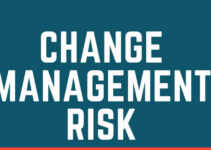Change is the only constant in the world and things are always in the process of change continuously both at the personal and organizational levels. Today, we’ll discuss the types of change management; both at the organizational level and individual level, and directed change at the organizational level along with examples.
Types of Change Management With Examples
Some of the main types of change management and their sub-categories with examples are as follows;
Organizational Level Change
Organizational-level change is a slippery and critical stage, and it causes a lot of confusion among people about the impact of the change in the organization. People at different levels from front-line workers to top management are fearful of the change; because any type of unexpected change may come from the change leader. Change leaders and change managers offer you a ladder and a pathway to go through from one type of change to another.
Some of the main types of organizational-level change management are as follows;
I-Evolutionary Change Management
It is a very common type of change management practice that many organizations implement. Evolutionary change is as older as the history of organizations, and it has been there like forever. However, the reason experts call it evolutionary change is that it comes into existence through the natural process of selection. It becomes unavoidable when the performance of employees changes, they make small adjustments and change their reactions relevant to the changing environment.
Evolutionary change is a small, insignificant, and random type of change. The accumulated impact of a series of small changes would transform and shift the way how people do things in their routine life. It impacts how people respond and does things in a gradual manner.
Example
The techniques and methods of change management are widely spread out on how to change and employ the incident management process. It is important to mention here those changes aren’t documented, and the team has already found a shortcut to it.
II-Revolutionary Change Management
Revolutionary change management is also a very older technique. It is a type when an external authority forcefully implements changes on them; people welcome it sometimes, but often not. Usually, it brings a shift in large power.
Example
A new CEO of the company brings revolutionary changes like hiring, firing, and department changes within the organization. Just like Satya Nadella brought a revolutionary cultural shift in Microsoft.
III-Planned or Directed Change Management
Planned change management wasn’t popular practice in the early part of the 20th century. But it is becoming common practice for the past roundabout 80 years or more. However, the reason experts call it directed or planned changes is that it focuses on achieving a specific goal or objective. If you want to bring planned or directed changes into the organization, then you need to align organizational culture, employees, and management with the company’s system, process, structure, and strategies.
Example
A company launches a new employee welfare system, launches a new product, changing in the incentive system, or something else; they all are examples of planned changes.
Planned or Directed Change At the Organizational Level
Some of the main types of planned or directed change management at the organizational level are as follows;
I-Developmental or Incremental Change Management
It is the simplest form of change management; it focuses on improving the existing business position in terms of performance standards, conditions, methods, processes, and skills of employees. It follows the concept that small changes in daily working life would bring large changes by resulting in the form of a robust and healthier system.
Example
Problems-solving methods, team building, improvement in the work processes, interpersonal communication training programs, and increasing quality or sales are some of the main examples of developmental or incremental change management.
II-Transformational Change Management
Transformational change management is a type of visualizing and envisioning the future state, with unknown details, and the final state would evolve over time. It requires you to combine the results on a trial-and-error basis, the latest interaction and communication, and boundaries. However, it is completely different from such projects where you define the activity, processes, outcome, and output of the processes; you have a plan for dealing with various types of issues.
In transformation change management, you don’t have a roadmap between your existing and future state. You don’t know the changing behavior and mindset, and the factors that would impact the relationship of top management, executives, and employees. Here, you invent the future state rather than waiting for it to evolve; employees and the management change their perception relevant to the required future that they envision.
Example
Merger and acquisition, Rebranding, and Transformation from traditional methods to virtual and online systems are some of the top examples of transformational change management.
III-Transitional Change Management
Transitional change management is a type that focuses on changing and replacing the current method or process with something new or completely different. Here the employees and people have to let go of the old system, methods, and processes, and adopt a completely new system. In transitional change management, you can completely envision and visualize the future state with all the details before implementing the change.
It is a type of change that is suitable for ordinary and small changes in organizations, where it would impact the actions and skills of employees. However, it doesn’t impact the deeper-level cultural issues and values of the company
Example
IT system implementation, developing a new product and replacing it with the new one, simple acquisition, and re-organization are some of the top examples of transitional change management.
Individual Level Change Management
Some of the main types of individual-level change management with examples are as follows;
I-Exception Change Management
Exception change management is a type where people experience a rare and isolated change event in their lives. It makes them feel different, but it won’t impact their various other areas of life. Their impact would be very small and short.
II-Incremental Change Management
Incremental change management is a very common experience for many people. People won’t observe it at first, but the gradual addition of new factors would replace completely the old methods or systems. However, it doesn’t trigger the defenses to the old system while introducing the new one.
III-Pendulum Change Management
Pendulum change management is a type where you experience the sudden change swinging from one state to another like the pendulum. It would happen when a person follows a new point of view completely different from their previous state.
IV-Paradigm Change Management
Paradigm change or proper change management is when you redefine the behavior, tasks, and information in order to develop a new value system or belief. Experts call it a “gold standard” because you completely modify the belief and values of an individual. However, if you internalize the change, then you can fully predict future behavior and actions.
Conclusion: Types of Change Management With Examples
After an in-depth study of types of change management with examples; we have realized that types of changes are different both at the personal and organizational levels. If you are learning about the types of change management with examples, then you should keep in mind the abovementioned types and examples.
Ahsan is an accomplished researcher and has a deep insight in worldly life affairs. He goes Live 3 days a week on various social media platforms. Other than research writing, he’s a very interesting person.


